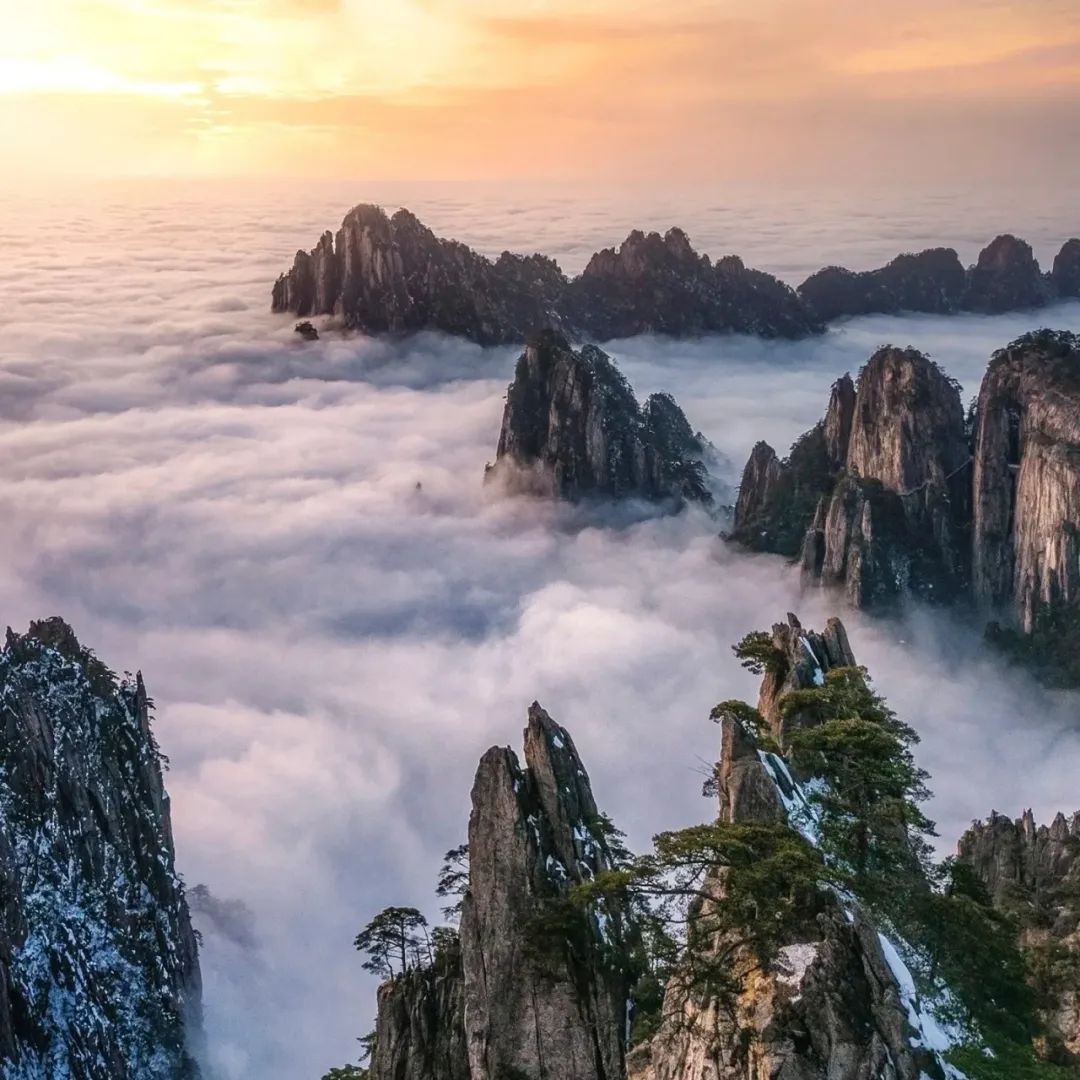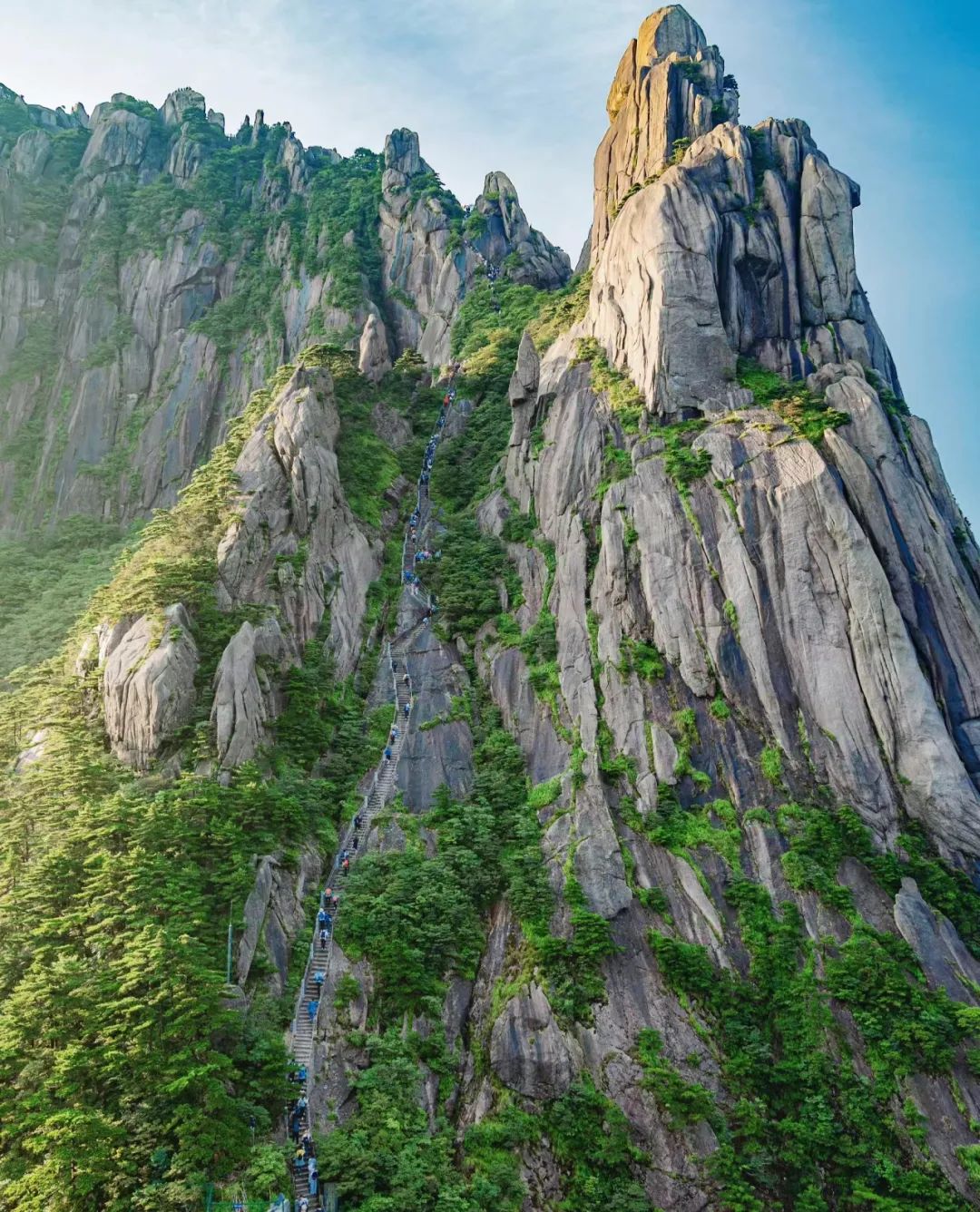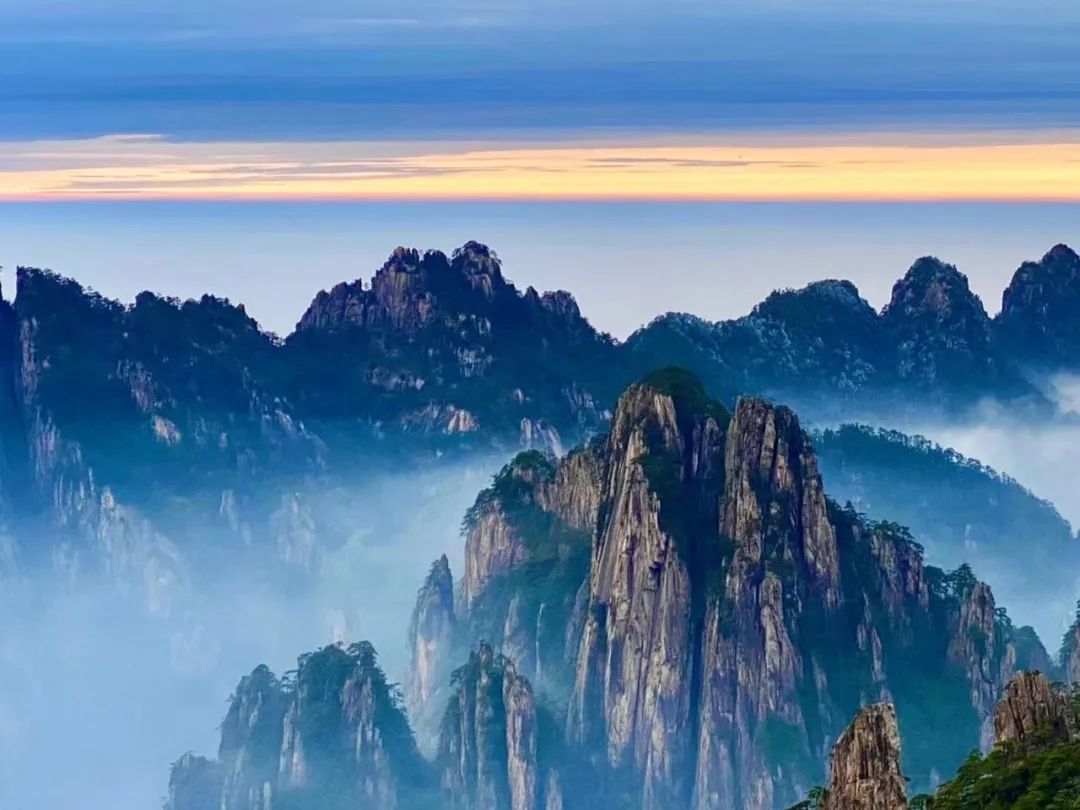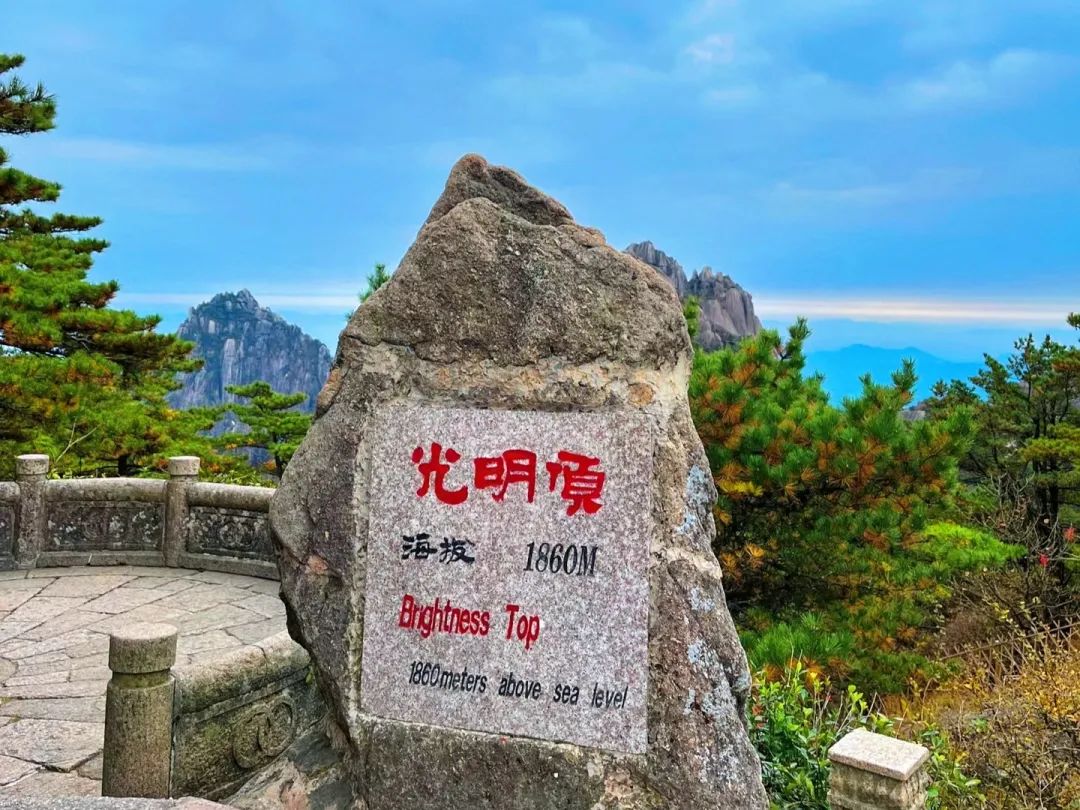Huangshan Scenic Area, located in the Huangshan District of Huangshan City, Anhui Province, China, is a UNESCO World Cultural and Natural Heritage site, as well as a World Geopark and Biosphere Reserve. It is also recognized as a national scenic area and a 5A tourist attraction.
Historically known as Yishan, Huangshan gets its name from its dark, slate-like peaks. According to legend, the Yellow Emperor Xuanyuan once gathered medicinal herbs and practiced alchemy here, rejuvenating himself after bathing in the hot springs for 49 days. In the Tang Dynasty, Emperor Xuanzong renamed it Huangshan, meaning “Mountain of the Yellow Emperor.”
The Huangshan Scenic Area covers an area of 160.6 square kilometers, stretching from Huangshi in the east to Xiaoling in the west, from Erlong Bridge in the north to Tangkou Town in the south. Its iconic landscapes include the “Five Wonders” (strange pines, unique rocks, sea of clouds, hot springs, and winter snow) and the “Three Waterfalls” (Renzi Waterfall, Baizhang Spring, and Jiulong Waterfall). The Welcoming Pine symbolizes the hospitality of the people of Anhui.
Huangshan features 88 peaks over 1,000 meters high, with the three main peaks being Lotus Peak, Bright Summit, and Tiandu Peak, all exceeding 1,800 meters. Renowned for its strange pines, unique rocks, sea of clouds, and winter snow, it is celebrated as the “Number One Extraordinary Mountain in the World.”
The Ming Dynasty traveler Xu Xiake remarked, “Among the famous mountains in the world, none can compare to Huangshan.” The mountain’s formation involved a complex geological evolution that began about 1.9 billion years ago, initially existing as a marine environment. Over time, tectonic activities transformed Huangshan into land.
Approximately 3 million years ago, Huangshan underwent glacial processes, leaving behind unique glacial landforms. Through the long-term effects of weathering and erosion by natural elements, Huangshan developed its distinctive granite peak forest landscape, with significant elevation changes and deep-cut valleys.
The area is home to 72 peaks, with the highest being Lotus Peak at 1,864.8 meters. These peaks create a spectacular mountain landscape. Huangshan’s unique rock formations, such as those resembling animals and objects, are notable attractions, including “Monkey Watching the Sea” and “Flying Stone.”
The sea of clouds is another marvel, shrouding the peaks in mist and creating picturesque views. The sea of clouds is divided into five main areas: South Sea, North Sea, East Sea, West Sea, and Sky Sea, each offering unique scenery.
The Huangshan Hot Springs are an essential part of the area, featuring clear, warm mineral-rich waters beneficial for health, therapy, and beauty treatments.
The Yupping Scenic Area, centered around Yupping Tower and home to Lotus and Tiandu Peaks, is often referred to as the best place to experience Huangshan’s wonders. The Welcoming Pine stands tall beside Yupping Tower, symbolizing the warmth of the region.
Lotus Peak, the highest in Huangshan, is located centrally, west of Yupping Peak and east of Tiandu Peak. At 1,864.8 meters, it is also the third highest peak in East China. The first recorded climbers were Wu Longhan, Bao Yunlong, and Song Fuyi in 1268. Xu Xiake later recognized it as the most prominent of Huangshan’s three main peaks.
The peak resembles a blooming lotus flower and features inscriptions like “Truly Remarkable” and “Not of This World.” From the summit, visitors can enjoy panoramic views, including spectacular cloud seas under favorable weather conditions.
Tiandu Peak, the third highest peak in Huangshan, is situated in the southeast and is named “Heavenly Capital.” Historically difficult to access, it has since developed climbing paths.
Renowned for its steep and majestic terrain, Tiandu Peak features the Jiyu Backbone, resembling a fish’s back, which is one of Huangshan’s most thrilling spots.
Bright Summit, located centrally at 1,860 meters, is the second highest peak, famous for its broad, sunlit area. It serves as an excellent viewpoint for sunrises, sunsets, and the rolling clouds, with historical significance as the site of a former temple.
Huangshan’s many attractions each offer unique experiences, allowing visitors to choose their routes based on interests and time. Seasonal maintenance occurs from December to March, when certain areas, including the peaks, are temporarily closed to preserve the ecosystem, ensuring sustainable tourism development.